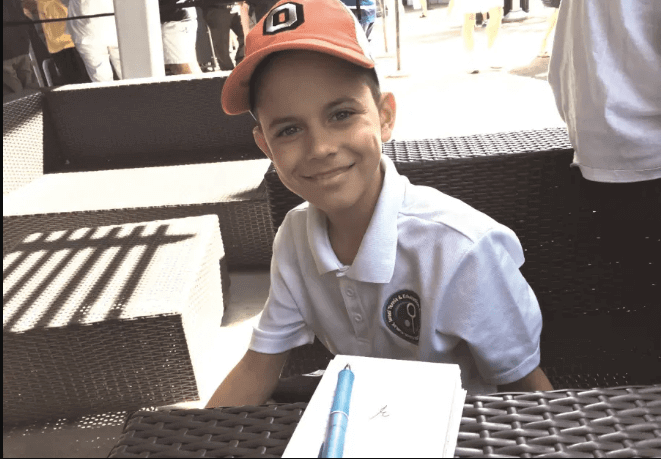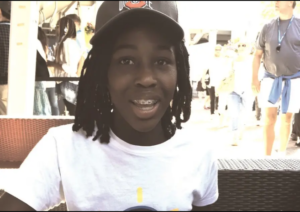Original Article Published On The Jerusalem Post
How Shabbat-observant music lovers grooved at the Lockn’ Festival in rural America
BLUE RIDGE MOUNTAINS, Virginia – When the biblical Abraham and Sarah opened up their tent and welcomed everyone to come in, they had no idea they would be setting a precedent that would be replayed last week at the four-day Lockn’ Festival in the Blue Ridge Mountains of Virginia.
A “hippie” jam-band Americana gathering held annually since 2013 and attended by some 30,000 music lovers, Lockn’ has featured headliners such as Phish, Dead and Co, Tom Petty, Robert Plant and Carlos Santana. The festival strives to blend world-class music, promote local vendors and encourage community engagement.
For an observant Jew, attending a music festival over Shabbat poses many potential logistical challenges: It is not permitted to light fires, make any purchases or carry in a public place. There is no kosher food on site, and many would question the permissibility of attending a concert at all on the Sabbath – even if tickets are purchased in advance and one need only show a wrist band to get in.
Enter Rabbi Yehoshua Eliovson and 25 members of his JamShalom and Shabbat Tent organizations.
Shu, an IT professional with Orthodox rabbinic ordination, has been friends with festival organizer Peter Shapiro for many years. JamShalom received special permission to arrive at Lockn’ on Wednesday to begin setting up its “Shabbat Tent.”
The tent makes it possible for observant Jews to keep Shabbat while also attending a music festival, and it serves as a source of outreach and support for concertgoers.
The American-born Shu, who has lived in Israel since 2004, drove down from New York with two of his children, ages 17 and 23, in vehicles loaded with camping gear, banners, tapestries, rugs and Shabbat food donated by Grow & Behold. They set up the communal tent to be used for prayers and meals, but it was destroyed in a torrential rain storm. After purchasing a new big tent, the crew was on their way to again building a Shabbat camp.
It rained again most of Friday. Three hours before the start of Shabbat, the rain stopped and the sky cleared. Two guys with deep connections to music and traditional Judaism, Yehuda and Motti Shur, heated food for Shabbat dinner over a camping stove and warmers. They grew up in a Shabbat-observant home with a music-loving father, Rabbi Moshe Shur, the longtime director of Queens College Hillel. The elder Shur once lived on a California commune led by Wavy Gravy, jammed with Grateful Dead guitarist Jerry Garcia, played in the Diaspora Yeshiva Band, and presented at Blues for Challah: A Grateful Dead Shabbaton.
TWO YOUNG shirtless men were on ladders around the campsite, anchoring wood poles and tying string to the tops as part of the eruv that would enable observant Jews to carry on Shabbat. Shu, meanwhile, entertained questions from curious Jewish and non-Jewish fellow campers. “We don’t roll on Shabbat,” Shu tells a 40-something couple, explaining, “We only carry within the private domain within our campsite.”
He then shared, “My rebbe is Trey [Anastasio, lead singer of Phish], and his rebbe is Derek Trucks, and both will be performing tonight. We are excited!”
Leib Meadvin, a Philadelphia area artist and math teacher with a long beard who just came from the for-pay shower house, is dressed in dark slacks, a white button-down shirt and Crocs. The hassid, clearly the oldest member of the group, has a long and distinguished history of following the Grateful Dead and attending concerts. He proudly shows off his tallit and tefillin bag with his Hebrew name and Grateful Dead logo.
Unlike most members of the group who feel comfortable walking to the concert venue on Shabbat (and who are able to enter without scanning their wrist band if they say they are with JamShalom), Leib and his son will not hear live music until after the Havdalah prayer on Saturday night when the Tedeschi Trucks Band will be joined by Trey Anastasio.
Shabbat starts with most still wearing shorts and tie-dyed shirts. Shu shares words of Torah, leads an extended Kabbalat Shabbat with Lecha Dodi sung to the tune of the Grateful Dead’s “Ripple.” After Kiddush and Hamotzi (the blessings over wine and bread) and after dinner is served, the eclectic group sits in a circle on chairs and carpets.
Lisa, a young woman from Louisville, Kentucky, who lives in Brooklyn, tells about her cannabis edibles business, explaining how she carefully doses each of the three layers of her signature cakes.
“If you feel comfortable eating in my house, you will feel comfortable with the kashrut of my edibles!” Lisa came to Lockn’ and the JamShalom “to cultivate community.” She observes, “We are one big festival family. THIS is our family within a family.”
There are several Israelis in the group. Two hesder yeshiva students whose families made aliyah from the United States five years ago are here, prior to enlisting in the Israel Defense Forces.
Racheli, who grew up in a haredi (ultra-Orthodox) family in Lakewood, New Jersey, and who works in special education in Israel, is here for the shows, and for the “the Rabbi Shu experience.” She is also here for “the people, the tapestries, the kitchen full of food, and the heady jams!”
ONE OF Shu’s daughters just completed her service in the IDF. She and Shu will continue on to Colorado to see some Phish shows before traveling in India.
Dinner is quick. Most dash off to the venue to catch the Trey Anastasio Band with Derek Trucks. Even more music awaits at another venue, Garcia’s Forest, with a set starting at 12:30 a.m. More prayers, Shabbat food and music will follow Saturday, late morning.
Peter Shapiro, the festival founder with deep Jewish ties, loves what he sees. “Whenever I see Shu and the JamShalom crew at a show, it makes me feel better. They are able to bring out and evoke the best of the Judaic spirit and do it in an accessible way that people of all ages and backgrounds can embrace and feel a part of. It is uplifting and a model for showcasing the best that the Jewish religion and its culture and people represent.”
According to Prof. Shaul Magid, distinguished fellow in Jewish studies at Dartmouth College and senior research fellow at the Shalom Hartman Institute of North America, there is a long history of observant Jews attending concerts and music festivals over Shabbat.
“This Shabbat counterculture thing started with the Rainbow Gathering,” in the early 1970s. “They had a Shabbat tent, an eruv and hevra [community]. It was a place for Jews, and non-Jews and a lot of Grateful Dead stuff, and people returned each year.” He also credits the Havurah movement of the 1970s with empowering Jews to take a “do it yourself” approach to Jewish ritual and observance.
While most Chabad and mainstream Orthodox Jews would likely not attend a music festival over Shabbat, Magid credits the influence of Chabad with the idea that “there is no place a Jew can’t go.” Magid feels that “Jews coming to music festivals through JamShalom represents a certain kind of confidence we American Jews have. We are good. We can go anywhere!”
Rabbi Menachem Creditor, author, activist, musician and scholar-in-residence at UJA-Federation New York, approaches the question of observant Jews attending music festivals through the lens of a rabbi.
“When a rabbi is asked a question like this, it’s typically easier to say no,” he says. “In truth, the beauty of halacha [Jewish law] is its elasticity. Finding ways for Jewish tradition to allow for a communal experience of music demonstrates the power of tradition to not reject the world but rather cherish it enough to see its worth.”
Rabbi Gabe Greenberg, director of the Jewish Renaissance Project at Penn Hillel, is supportive of Jews who balance Shabbat observance with music festival attendance.
“Observant Jews who attend these music festivals are embodying and enacting the ancient Jewish yearning to celebrate with community during pilgrimage festivals. I think this fusion of old and new is a wonderful manifestation of Rav Kook’s adage, ‘The old shall be made new, and the new shall be made holy.’”
WHILE SOME people who attend music festivals with JamShalom have been Shabbat-observant for many years, some younger participants are newly observant or seeking, and appreciate the guidance and support that JamShalom and the similar Shabbat Tent group offers.
Lara and Cheston Mizel at Lockn’ from Los Angeles run a Shabbat tent described as “an oasis of chill based on Shabbat hospitality, mindfulness and nourishment for the body and soul.”
Cheston Mizel has observed that Jewish twenty- and thirty-somethings who attend music festivals “are looking for something and want to connect. If we don’t do it, others will give answers. We didn’t grow up frum [religious] but found it later. We love festivals and we want to share and do outreach.”
The Shabbat tent was started in 1999 at a Phish show as a one-time project. Its success prompted organizers to expand to various settings across the country, appearing at festivals such as Bonnaroo, Mountain Jam, Gathering of the Vibes and Fare Thee Well. They have also hosted Passover Sedarim at Coachella (affectionately called “Matzachella”) and most recently hosted nearly 200 people at the July 4th High Sierra Music Festival in Quincy, California.
“We are listed on the festival website and we are located right near the front door!” reports Mizel proudly.
Shu is also there to meet the diverse, unique needs of young Jews. He put up his first JamShalom flag at the Super Bowl in 2011 and at a Nassau County Coliseum concert in 2012, where he recounts, “We grilled with our hevra. It was chill. Then, Pete [Shapiro] invited us to Lockn.”
Shu finds young Jews “in their best moments spiritually, when they are at music festivals. We put up a tent at a crossroads of where Jewish kids are. We at JamShalom create connections where they are.”
In Israel, Shu works for Deloitte, where he is a service leader for strategic storytelling and fundraising readiness. He has also continued to consider ways he might help youth in both Israel and America. “I love music and realized kids were in the fields,” he says.
Through JamShalom, and a new venture called the Negev Farmhouse (named after a Phish song and album), Shu and his wife say they are striving to meet the needs of Jewish young adults. “I have the largest congregation of millennials in the world. They call me 24/7.”
The Negev Farmhouse “provides an authentic space for young Jews (18-32) to discover and celebrate their personal relationship with Judaism within a community of like-minded friends.”
Shu finds millennials who don’t come from observant backgrounds are discovering Shabbat and observance through JamShalom. “They say, ‘I love JamShalom and PhishShalom and doing Shabbat at shows. Can’t we do Shabbat without the concert?’” He points out that, of course, Shabbat comes every week and can be meaningful in all locations.But a Lockn’ Shabbat – with 12 hours a day of live jam band music for four days – only comes once a year.



